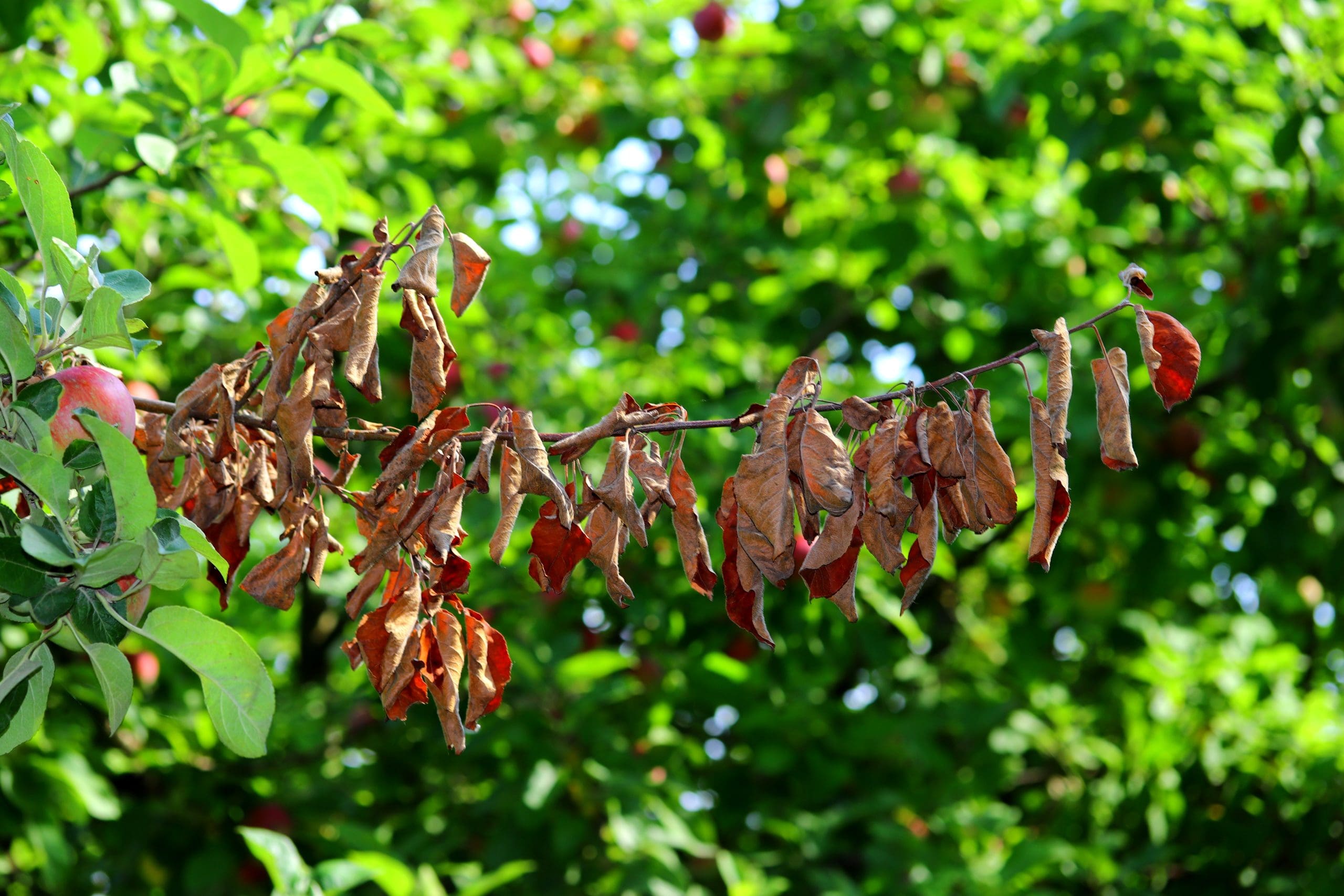
Foliar diseases are one of the most common diseases in trees, and if left untreated, they will lead to plant death. That’s why identifying the different types of foliar diseases ailing your client’s trees and understanding how to treat them is incredibly important. So, what are some of the different types of foliar diseases and how can you identify them?
Anthracnose
This type of foliar disease affects many species of trees. However, certain species, such as ash, oak, maple and sycamore, are the most susceptible to infection. Depending on the location, you can expect to see symptoms begin to appear between the months of May and mid-June.
The symptoms caused by anthracnose differ from species to species. Sycamore, white oaks, and maple have larger brown to purplish lesions that develop along the leaf’s veins. Ash, black oak and walnut show more circular and discrete lesions on the leaves.
When treating anthracnose, you can use liquid copper sprays and sulfur powders. They can be applied weekly. Spray early in the day and do not apply them when the weather is too hot. The seeds of the trees can also be treated before planting.
Fireblight
This disease causes wilting and darkening of blossoms and leaves in species such as hawthorn, pyracantha, spirea, crabapple and other species in the rose family. The leaves will appear to be shriveled up, and cankers typically develop on the stems.
For treatment, the diseased part of the tree can be pruned out and sprayed with an antibacterial as needed. Any infected material should be removed to keep the infection from spreading.
Powdery Mildew
This foliage disease is very easily recognized. It’s characterized by powdery white spots and develops the easiest in warm, dry weather. The leaves may turn yellow once the tree is severely infected and fall prematurely during the growing season. This disease is most severe in younger trees. However, it does not cause significant damage.
Powdery mildew is most common in maple, basswood, dogwood and crabapple trees, but it can affect any species.
For treatment, commercial fungicides can be used to kill the disease. Baking soda mixed with lightweight horticultural oil in water has also been shown to be effective.
Leaf Spot Diseases
There are a number of different diseases that impact foliage with the most prominent symptom being spots. Entomosporium attacks rose species and fruit trees. Oak trees are primarily affected by the Tubakia leaf spot, which is a late-season fungal disease. You can identify if your plant is infected by a leaf spot disease because it causes brown spots, which are sometimes accompanied by a yellow or reddish hallow. After infection, this disease spreads quickly from leaf to leaf.
Most leaf spot diseases are caused by fungi, and they typically do not seriously harm the plants.
Treatment for this includes pruning and removing heavily affected leaves. Make sure to provide frequent treatment of copper-based fungicides to keep the plant away from other plants to avoid the spread of infection.
Rust Diseases
Rust diseases apply to a small group of diseases that result in freckle-like spots on the surface of the leaf. The most common color of the spots is a reddish “rust” color. However, they can be other colors as well. Abnormal growths named galls will sometimes accompany rust diseases.
Rust diseases will not kill their plant host, but they can limit the growth of other plants.
For treatment, it is super important to remove any infected plants. Because rust diseases can only live in a very small range of temperatures, hot water can kill some types of the diseases. Chemical fungicides can be used in early spring before the trees are infected but are ineffective after symptoms appear.

